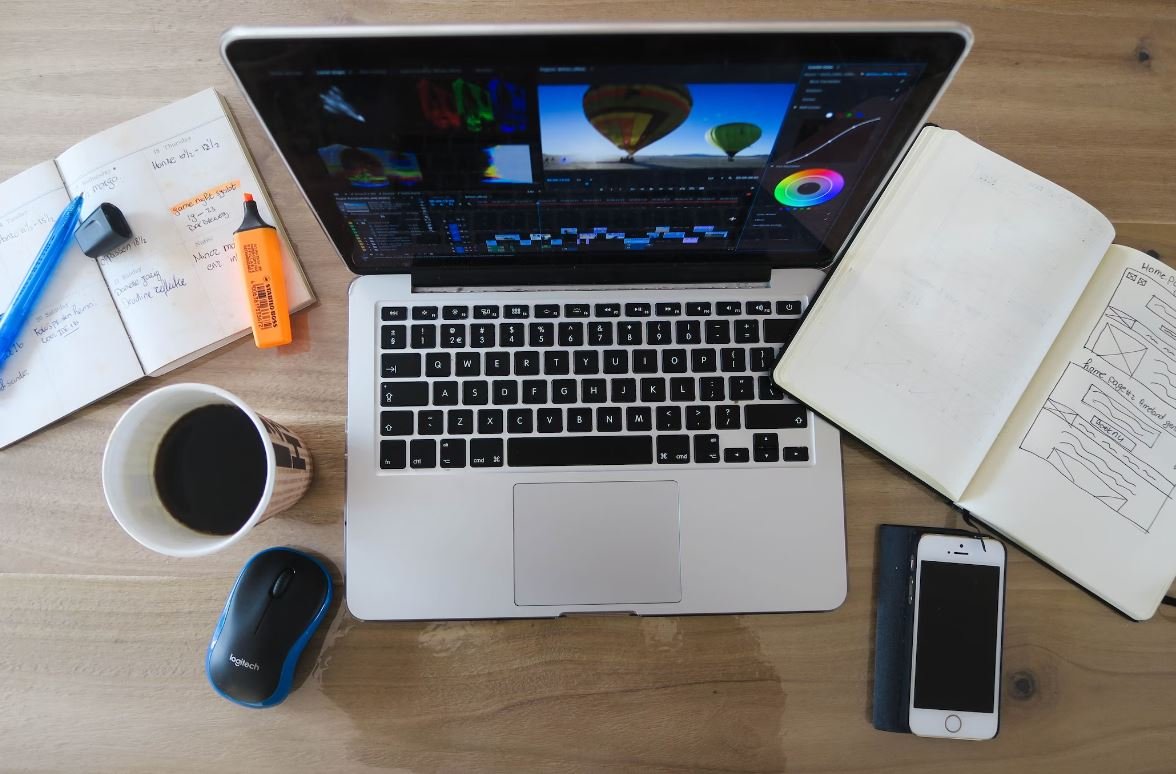Different Types of Video Footage
In today’s digital age, video has become a powerful tool for sharing information, entertaining audiences, and capturing important moments. There are various types of video footage that serve different purposes and cater to different audiences. Whether you are a content creator, filmmaker, or simply a video enthusiast, it is beneficial to understand the different types of video footage available and how they can be used. In this article, we will explore some of the most common types of video footage and their characteristics.
Key Takeaways:
- Understanding the different types of video footage allows for effective storytelling and communication.
- Each type of video footage has distinct characteristics and is suited for specific purposes.
- Consider the target audience and desired impact when choosing the appropriate type of video footage.
1. Narrative Footage
Narrative footage is used in storytelling and often follows a structured plot or storyline. It can be found in films, documentaries, and commercials. This type of footage typically involves actors, dialogues, and carefully crafted scenes to convey a specific message or emotion. **Narrative footage relies heavily on scriptwriting, set design, and acting to engage the audience.** It is best suited for narrative-driven content and can range from short films to full-length movies.
*Narrative footage allows filmmakers to transport viewers into a fictional world and evoke powerful emotional responses.*
2. Documentary Footage
Documentary footage aims to capture real-life events, people, or phenomena. It focuses on presenting factual information and often includes interviews, archival material, and observational footage. Documentaries can cover a wide range of topics, such as nature, history, science, or social issues. **Documentary footage requires thorough research, interviews, and an objective approach to present a balanced perspective.** It is commonly used in educational settings, news programs, and online platforms.
*Documentary footage allows viewers to gain insight into real-world subjects and expands their knowledge on various topics.*
3. Explainer Video Footage
Explainer video footage is commonly used to simplify complex ideas, processes, or products. It typically involves animations, motion graphics, and voice-over narration to convey information in a clear and engaging manner. Explainer videos are versatile and can be found in various contexts, such as educational videos, product demonstrations, or company presentations. **Explainer video footage combines visual elements and concise explanations to facilitate understanding and retention of information.**
*Explainer video footage breaks down complex concepts into digestible visual components, making it easier for viewers to grasp the content.*
Tables:
| Type of Footage | Characteristics |
|---|---|
| Narrative Footage | Involves structured plot or storyline, actors, and dialogues |
| Documentary Footage | Focuses on real-life events, includes interviews and observational footage |
| Explainer Video Footage | Uses animations and motion graphics to simplify complex ideas |
4. Stock Footage
Stock footage refers to pre-recorded video clips that are licensed for use in other projects. It provides a convenient and cost-effective solution for filmmakers who need specific shots, scenes, or visuals. **Stock footage is often categorized by themes, genres, or specific contexts** (e.g., nature, sports, cities), allowing users to easily search and find relevant content for their projects. It is widely used in commercials, films, TV shows, and online videos.
*Stock footage provides a vast library of visuals that can enhance the quality and production value of a project.*
5. Event Footage
Event footage is captured during live events such as concerts, conferences, sports games, or celebrations. It aims to document the atmosphere, activities, and highlights of the event. Event footage can be shot by professional videographers or even by attendees using their smartphones. **Event footage requires anticipation and the ability to capture decisive moments** to effectively convey the energy and essence of the event. It is commonly used in event recaps, promotional videos, and social media coverage.
*Event footage brings viewers closer to the action and allows them to experience the excitement and emotions of the event from a distance.*
Tables:
| Type of Footage | Usage |
|---|---|
| Stock Footage | Used to enhance projects and provide specific visuals |
| Event Footage | Document live events and capture the atmosphere |
6. Aerial Footage
Aerial footage is captured using drones, helicopters, or other means of capturing video from above. It provides unique perspectives and stunning visuals of landscapes, cities, or inaccessible locations. Aerial footage is often used in travel videos, commercials, documentaries, and real estate marketing. **Aerial footage requires skilled pilots and specialized equipment** to ensure safety and produce smooth, stable shots. It adds a captivating element and a sense of grandeur to the video.
*Aerial footage allows viewers to see the world from a bird’s-eye view, showcasing the beauty and scale of various locations.*
Conclusion:
Understanding the different types of video footage available can greatly enhance your video production capabilities. Each type serves a specific purpose and has its own unique characteristics. Whether you are looking to create a captivating narrative, educate your audience, or simplify complex ideas, there is a type of video footage that can help you achieve your goals. Consider the target audience, desired impact, and creative vision when selecting the most suitable type of video footage for your project.

Common Misconceptions
Misconception 1: All video footage is the same
One common misconception people have about different types of video footage is that they are all the same. However, this is far from the truth as there are various types of video footage that serve different purposes and are captured using different techniques.
- Not all video footage is suitable for every use or platform.
- Different types of video footage require different equipment and settings.
- The quality of video footage can vary significantly depending on its type.
Misconception 2: Stock footage is of low quality
Another common misconception is that stock footage is of low quality. While it is true that there may be low-quality stock footage available, there are also high-quality options produced by professionals in the industry.
- Stock footage can provide high-resolution and visually impressive clips.
- Professional videographers often contribute to stock footage libraries.
- Many stock footage sites offer a range of quality options to choose from.
Misconception 3: All raw footage needs editing
Many people believe that all raw footage requires extensive editing to be usable. However, this is not always the case. Raw footage can often be used as is or with minimal editing depending on the intended purpose.
- Raw footage can be intentionally captured to maintain authenticity.
- Sometimes raw footage captures the essence and emotion of a scene perfectly.
- Using raw footage can save time and resources in post-production.
Misconception 4: B-roll is less important than main footage
Some people underestimate the importance of b-roll footage, considering it less crucial compared to main footage. However, b-roll is an essential component of storytelling and can greatly enhance a video by providing context, variety, and visual interest.
- B-roll footage adds depth and richness to storytelling.
- It helps to break up the main footage and prevent monotony.
- B-roll can be used strategically to emphasize or support the main narrative.
Misconception 5: All drone footage is illegal or invasive
Lastly, there is a misconception that all drone footage is illegal or invasive. While it is true that drone laws vary across different regions, not all drone footage is taken illegally or with malicious intent. Many filmmakers and photographers use drones responsibly within legal boundaries.
- Drones provide unique and captivating perspectives that are hard to obtain otherwise.
- Some drone operators obtain proper permits and licenses to capture footage.
- With proper regulations and ethical practices, drone footage can be beneficial in various industries.

Different Video Resolutions
Video footage can be recorded at various resolutions, which determine the level of detail and quality in the image. The higher the resolution, the clearer and more lifelike the video appears. Here are different types of video resolutions:
| Resolution | Pixel Dimensions | Aspect Ratio |
|---|---|---|
| Standard Definition (SD) | 720×480 pixels | 4:3 |
| High Definition (HD) | 1920×1080 pixels | 16:9 |
| 4K Ultra HD (UHD) | 3840×2160 pixels | 16:9 |
| 8K Ultra HD (UHD) | 7680×4320 pixels | 16:9 |
Popular Video Formats
There are several standard video formats commonly used for various purposes. Each format possesses unique features and advantages. Let’s explore popular video formats:
| Format | Description |
|---|---|
| MPEG-4 | A widely supported format suitable for streaming, social media, and mobile devices. |
| H.264 | A highly efficient format with good compression, often used for high-definition video. |
| AVI | An older, but widely compatible format that maintains high video quality. |
| MOV | A format commonly used by Apple devices and software, known for its high-quality video. |
Aspect Ratios for Different Platforms
Aspect ratio represents the proportion of video width to height. Different platforms have specific aspect ratio requirements to ensure optimal playback and visual aesthetics. Consider the aspect ratios used by various platforms:
| Platform | Aspect Ratio |
|---|---|
| YouTube | 16:9 |
| 1:1 (square) | |
| TikTok | 9:16 (vertical) |
| Snapchat | 9:16 (vertical) |
Frame Rates for Smooth Playback
The frame rate determines the number of frames displayed per second, impacting the smoothness of motion in videos. Higher frame rates result in smoother playback. Take note of common frame rates used in video production:
| Frame Rate | Description |
|---|---|
| 24 fps | The standard frame rate for cinematic films. |
| 30 fps | Commonly used for television broadcasts and online videos. |
| 60 fps | Provides exceptionally smooth playback, ideal for high-action sequences. |
| 120 fps | Used in slow-motion videos for enhanced detail and fluidity. |
Storage Space Requirements
Different video resolutions and formats require varying amounts of storage space. This table showcases the approximate storage space needed for different video lengths:
| Resolution | Format | Video Length (Minutes) | Approx. Storage Space |
|---|---|---|---|
| 1080p | H.264 | 5 | 600 MB |
| 4K | H.264 | 10 | 2.4 GB |
| 1080p | MPEG-4 | 15 | 1.2 GB |
| 4K | MPEG-4 | 20 | 4.8 GB |
Video Production Tools
Various tools and software help professionals in creating captivating video content. Familiarize yourself with popular video production tools available:
| Tool | Description |
|---|---|
| Adobe Premiere Pro | A professional video editing software offering extensive features and capabilities. |
| iMovie | An intuitive video editing tool for Mac users, ideal for beginners and casual video production. |
| Final Cut Pro | A powerful video editing software specifically designed for Apple devices. |
| Davinci Resolve | A comprehensive application providing professional-grade color correction and audio editing. |
Video Distribution Platforms
After creating captivating videos, distribution platforms aid in reaching a wider audience. Familiarize yourself with different video distribution platforms:
| Platform | Monthly Active Users (in millions) |
|---|---|
| YouTube | 2,000 |
| 2,700 | |
| 1,100 | |
| TikTok | 1,200 |
Video Advertisements
Video advertisements prove to be an effective way to reach potential customers. Explore different video advertising formats:
| Ad Format | Description |
|---|---|
| Pre-roll | An ad that plays before the main video content. |
| Mid-roll | An ad that appears in the middle of the video content. |
| Overlay | A semi-transparent ad that appears at the bottom or top of the video. |
| Bumper | A brief, non-skippable ad that plays before the main video content. |
Video Streaming Platforms
Streaming platforms offer convenient access to a vast array of video content. Discover different popular video streaming platforms:
| Platform | Monthly Subscribers (in millions) |
|---|---|
| Netflix | 208 |
| Amazon Prime Video | 150 |
| Disney+ | 116 |
| Hulu | 42 |
Video footage encompasses a diverse range of elements, including resolution, format, aspect ratio, and more. Understanding these different types of video footage enables creators and viewers alike to make informed decisions about their video content. Whether it’s selecting the appropriate resolution or format for a specific platform or optimizing storage space, this knowledge enhances the overall video production and viewing experience.
Frequently Asked Questions
What are the Different Types of Video Footage?
There are several types of video footage that can be used in various contexts. These include:
What is Live Action Video Footage?
Live action video footage refers to videos that capture real-life events and subjects using a camera. It can involve shooting people, places, objects, or any other tangible element of the real world.
What is Stock Video Footage?
Stock video footage is pre-recorded video content that is available for purchase or licensing. It is created by professional videographers and filmmakers and can be used in various projects, such as films, commercials, and marketing materials.
What is Animated Video Footage?
Animated video footage is created using digital animation techniques. It involves generating moving images by manipulating characters, objects, and environments using computer software. This type of footage is commonly used in animation movies, TV shows, and advertisements.
What is B-roll Video Footage?
B-roll video footage refers to additional footage shot to enhance a primary video. It is usually used for cutaways, transitions, or to provide visual context for interviews or narrations. B-roll footage often includes shots of scenery, people, or specific details relevant to the main video.
What is Drone Video Footage?
Drone video footage is captured using unmanned aerial vehicles (UAVs) equipped with cameras. It offers unique perspectives and aerial views that are not easily achievable with traditional camera setups. Drone footage is commonly used in films, documentaries, and real estate videos.
What is Time-lapse Video Footage?
Time-lapse video footage is created by capturing a series of photos at fixed intervals and then combining them to create a fast-forwarded video sequence. It is often used to depict the passage of time in a condensed format, such as the growth of plants, construction progress, or natural phenomena.
What is Slow Motion Video Footage?
Slow motion video footage is shot at a higher frame rate than the standard 24-30 frames per second (fps). When played back at a normal speed, slow motion footage appears to be in slow motion, capturing and highlighting details that may be missed at regular speed. It is commonly used in action scenes, sports events, and scientific analysis.
What is Virtual Reality (VR) Video Footage?
Virtual reality video footage is specifically designed for immersive experiences using virtual reality headsets. It allows viewers to interact with a simulated environment and offers a 360-degree view of the recorded content. VR footage finds applications in gaming, virtual tours, and educational experiences.
What is 360-Degree Video Footage?
360-degree video footage captures a complete spherical view of the surroundings. It allows viewers to explore and look around the entire scene, giving a sense of being present in the recorded environment. Such footage is often used for virtual tours, interactive experiences, and virtual reality content.
What is Night Vision Video Footage?
Night vision video footage employs technology that enables recording in low-light or no-light conditions. It amplifies available light or uses infrared illumination to capture clear images even in total darkness. Night vision footage is commonly used in security systems, wildlife observation, and military applications.




